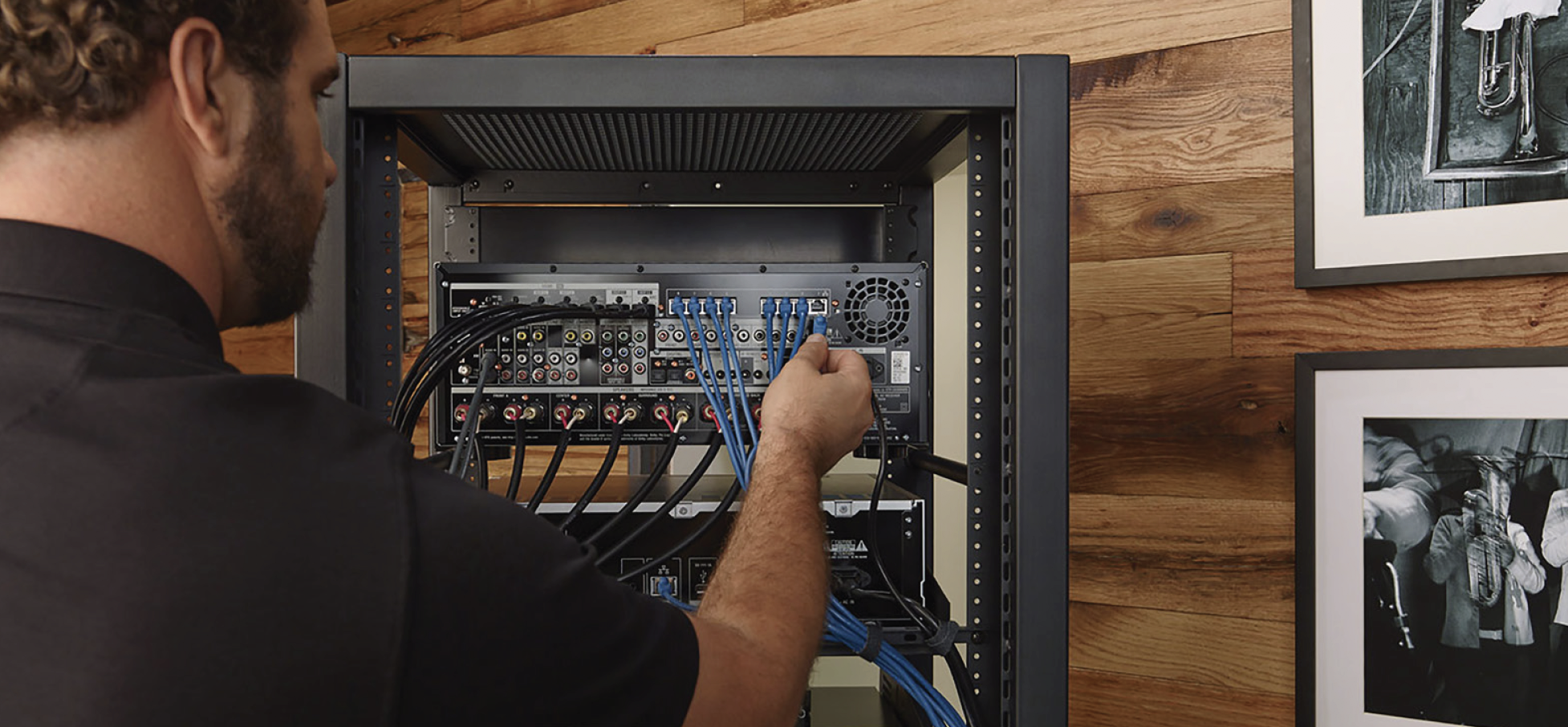
Separating Your Network
In a recent edition of the BRAVAS Luxury Living podcast, we talked to Bryce Nordstrand from Access Networks about upgrading our home networks. While there was a lot of good conversation about Wi-Fi 6 and wired vs wireless and technology trends, one issue caught many people’s attention. How do you keep up with all the changes in technology? Bryce had a great insight.
Which letter now?
OK – first for the technical bit. If your eyes start to glaze over, jump down to the next section!
In the days that cordless phones were the hot thing to have, we had to learned the difference between a 2.4 GHz band and a 5 GHz band phones. A 2.4 GHz band phone provided for longer range but transmits data at slower speeds, which didn’t always sound as good. The 5 GHz band phone didn’t go as far but sounded better. The range was lower for the 5 GHz phone because higher frequencies cannot penetrate solid objects, such as walls and floors.
The Wi-Fi standard is known as 802.11 and works across these same bands. While most of us remember 802.11a they have got as far as ‘y’ and have lots of confusing combinations. By the way, you can see a full list here if you are interested. Here are a few of the most important to know:
- 11a and b – the first standards for Wi-Fi were known as 802.11a and 802.11b. Ratified in 1999, 802.11a had a 54 Mbps data rate and worked on the 5 GHz band. It was faster than the 802.11b standard that came out at the same time and had a speed of 11 Mbps standard over the 2.4 GHz bands.
- 11n and ac – This was the next big jump allowed for communications at a speed of up 6oo Mbps on ‘n’ standard and supported both the 2.4 and 5GHz. The ‘ac’ standard only worked on 5Gb but allowed for up to 6.9 Gbps.
- 11ax is the latest protocol and if often called Wi-Fi 6. These devices are capable work at up to 1.6Gbps on 2.4 band and 9.6Gbps on the 5GHz band but you will get a lot less in real usage.
While other manufactures have supported Wi-Fi 6 for some time currently, the iPhone 11, 11 Pro, and 11 Pro Max are the only Apple products to support 802.11ax. It’s expected that future iPads and Macs will include support for it your MacBook cannot connect to it at 802.11ax speeds. For the PC user, the Dell XPS 13 (7390) is one of the few devices out on the market that supports Wi-Fi 6 today.
What should I do at home?
So, this brings us back to the BRAVAS podcast. How do you manage to keep your network up to date when standards keep changing all the time?
Along with partner-network equipment providers like Access Networks, BRAVAS will design your network to achieve two key objectives: firstly, to provide the backbone for all the communication within your home and, secondly, to give everyone and everything in your home access to the Internet as needed. To deliver on this we use six pieces of technology:
- Gateway/Router – built into a single unit, a gateway and router are simply a device that joins together the network in your home with the Internet coming from your Internet Service Provider (ISP).
- Firewall – will also filter what comes into your home to ensure it is safe and secure. This is often built into the Gateway/Router, but more secure systems will have their own Firewalls.
- Wireless Controller – manages the Wi-Fi environment for your home. In simple networks, this is may not be required, but as the network grows, so does the need for advanced control of the WiFi environment. This is the role of wireless controller.
- Switch - is the backbone for the wired network and can also be used to power devices like touchscreens and doorbells.
- Wi-Fi Access Points - as the home size grows the number of access points must increase to provide adequate wireless coverage. On Wi-Fi 6, no Access Point should probably try and cover more than about 1,350 square foot of space.
- Monitoring device – in larger networks, separate management and monitoring is possible by adding a proactive network monitoring product and service.
If you build your network with these as separate parts, then each part can be upgraded without changing the whole network. When you decide it is time for Wi-Fi 6, then it would require a hardware upgrade of the access points only (true for Access Networks but check for other suppliers). The wireless controller is designed to be upgradable with regular software as the normal maintenance. That might mean you can change the service to one area of the home without having to change all the access points in your network.
Networking is never easy
Your home network is the foundation upon which all you other home technologies will be built and like your home, your network needs a solid foundation. Sadly, despite the adverts, pretty boxes and simple diagrams, networking is never easy. Getting a professional in at the start of the process to design your network correctly, not only will reduce your frustrations, but it will help you upgrade it later.



